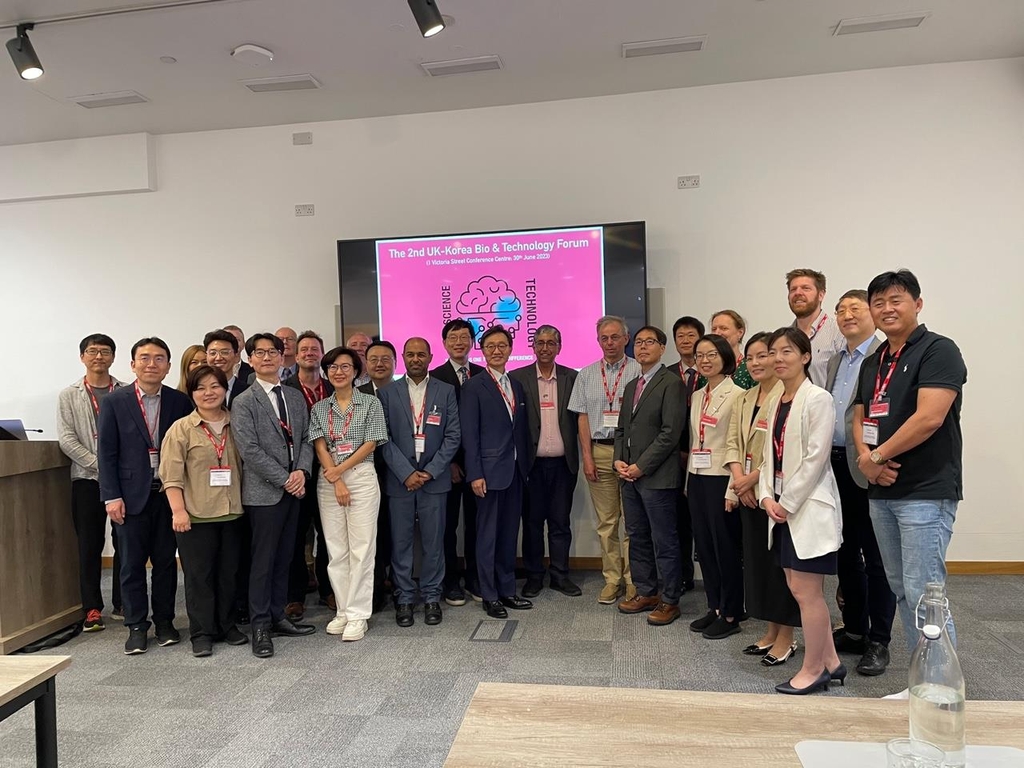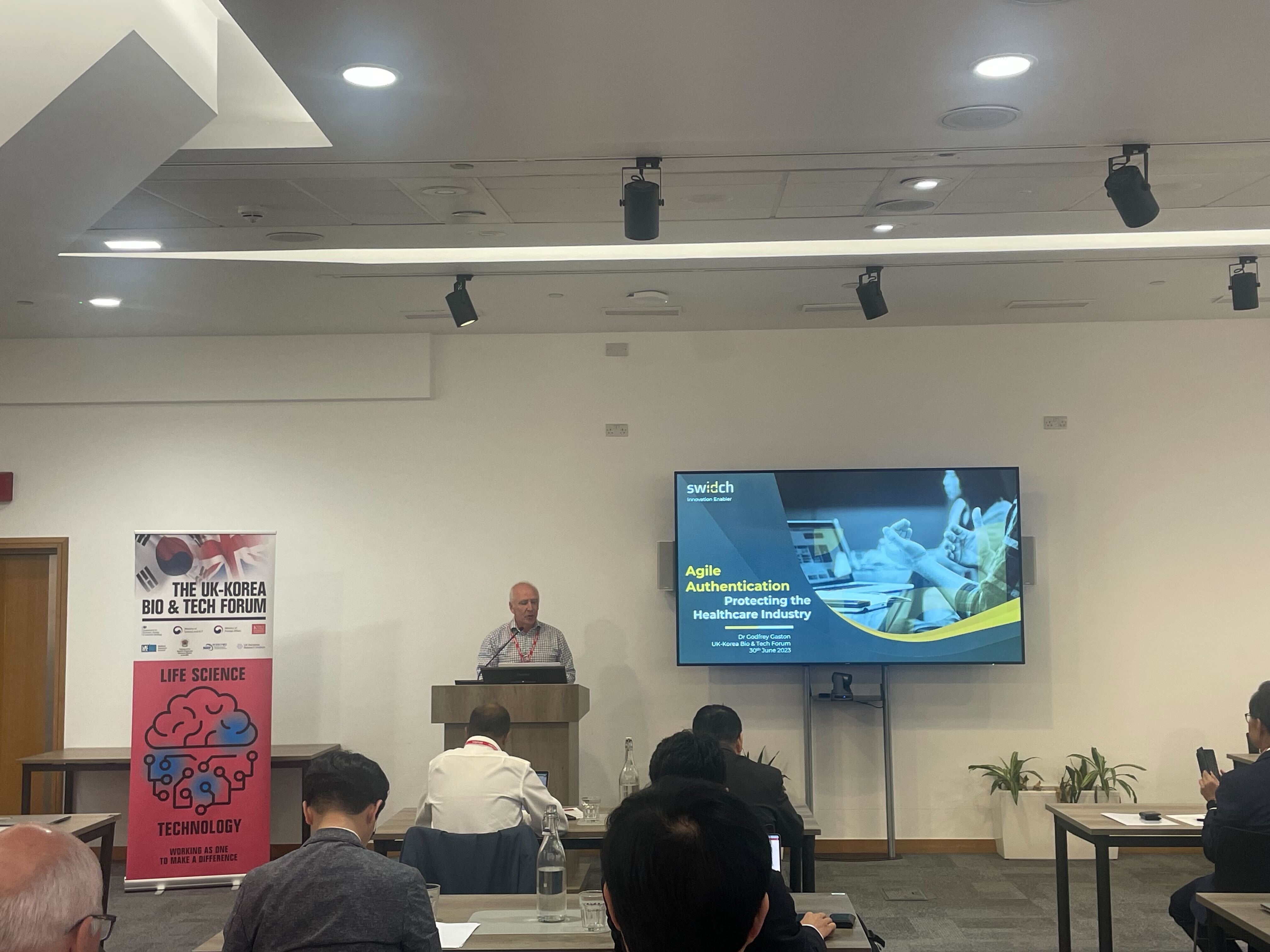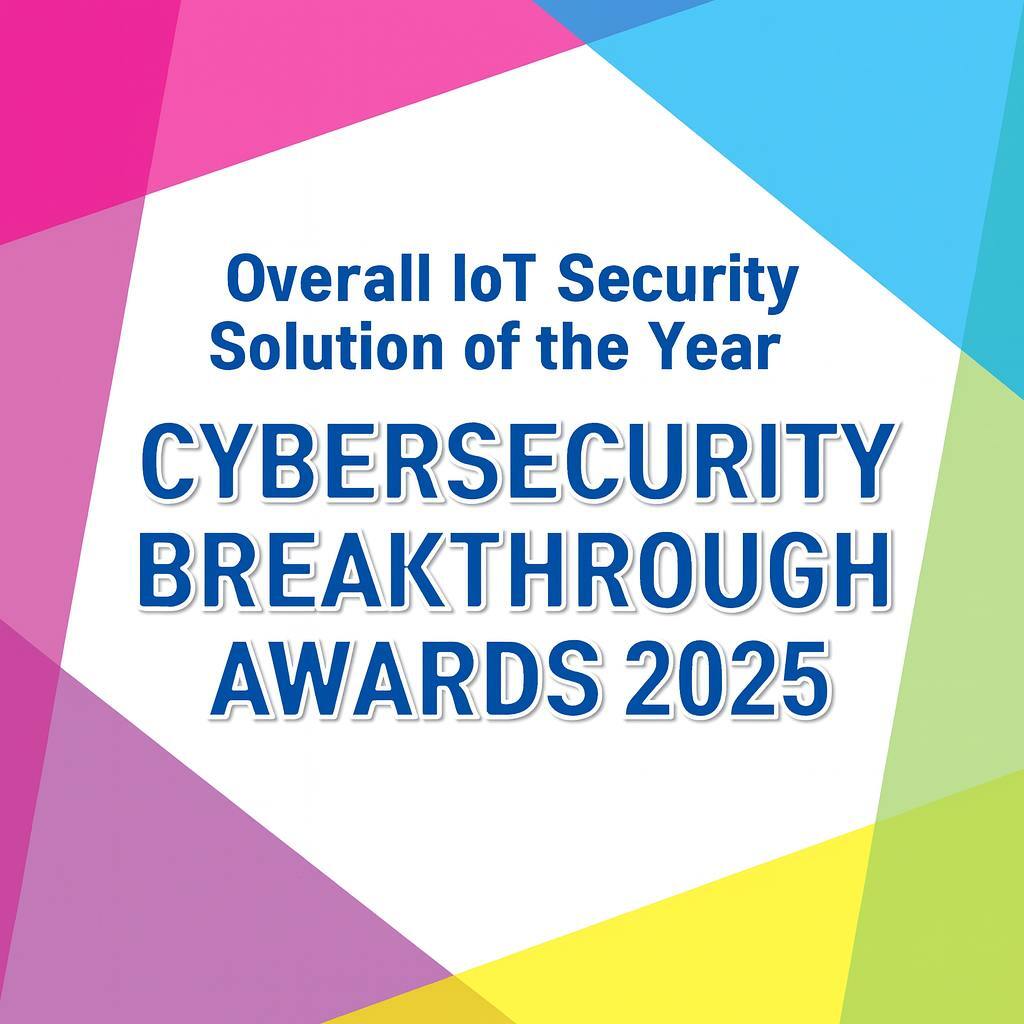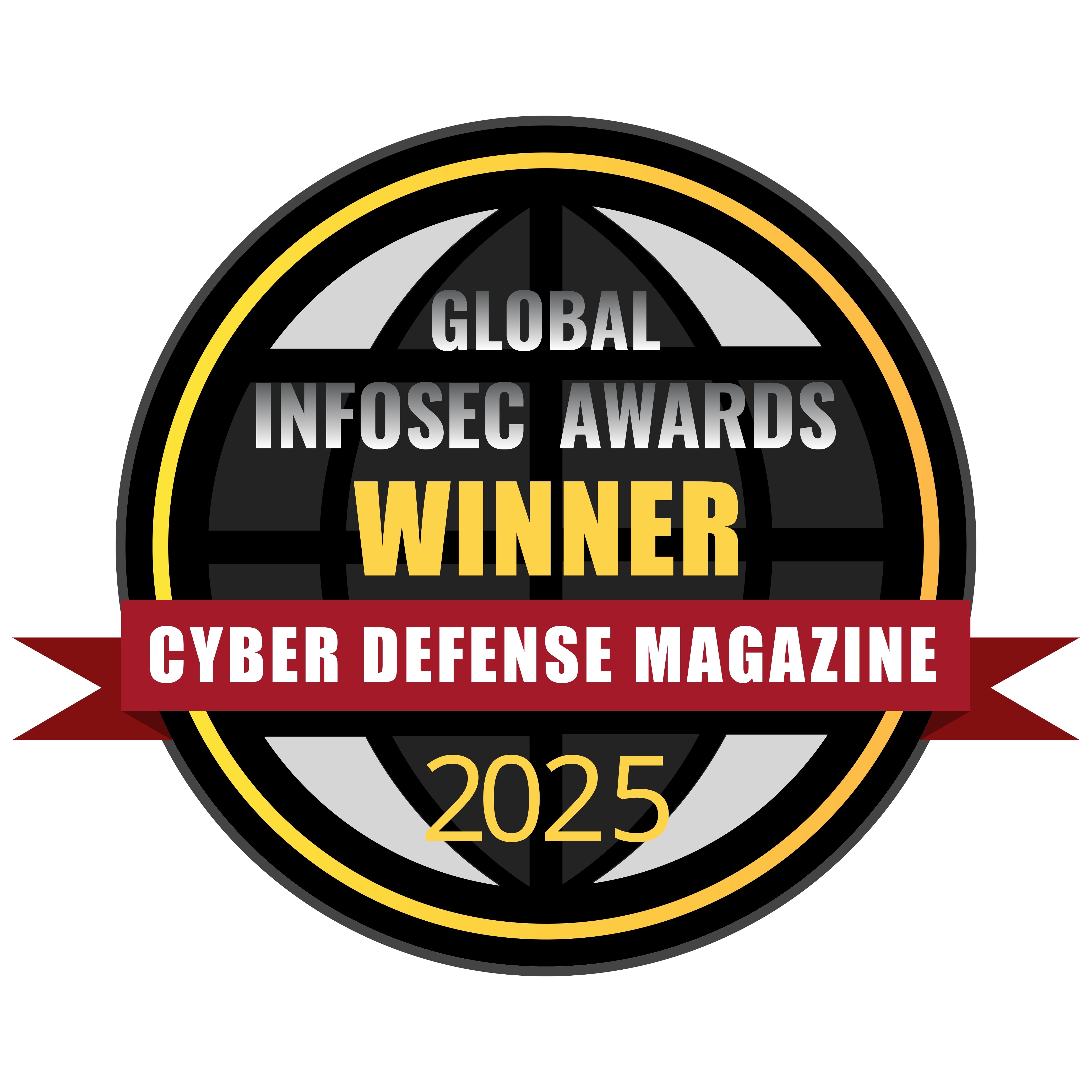swIDch presents at the UK-Korea Bio & Tech Forum 2023

Dr. Godfrey Gaston MBA, previously Executive Director of the Centre for Secure Information Technologies at Queen’s University Belfast, presented at the UK-Korea Bio & Tech Forum, highlighting how the global healthcare industry is facing several cybersecurity challenges. Being invited as a presenter to the UK-Korea Bio & Tech Forum is a testament to swIDch’s authentication technology, again highlighting its versatility and potential for growth in various industries. It has now been recognized for its value not only in operational technology (OT) and finance, but also in the BIO industry.
Some of the biggest challenges include the risk of patient information being stolen by phishing, data breaches, or ransomware attacks; medical devices often lack adequate security controls and can be vulnerable to malware, man-in-the-middle attacks, or DDoS attacks; medical professionals need the ability to access medical data remotely, which increases the risk of remote access attacks; and insufficient cyber risk training among healthcare workers, which can lead to shortcuts to security or poor third-party risk management.
There are several sets of regulations, requirements, and guidance available from several agencies including Medical Devices Regulations (MDR), In Vitro Diagnostic Medical Devices Regulations (IVDR), European Commission’s Medical Device Coordination Group (MDCG), and Medicines and Healthcare. Both sets of regulations include cybersecurity requirements. The European Commission’s Medical Device Coordination Group (MDCG) has issued guidance on cybersecurity for medical devices and how to comply with MDR and IVDR.

swIDch’s OTAC solutions can help the healthcare industry by providing one-way, randomized user-user, device-device, and user-device identification and authentication in an algorithm as a service (AaaS), supporting the development of innovative products and services embedded with robust authentication security. Using dynamic codes, OTAC helps devices easily identify and authenticate users and other devices. When a user generates OTAC on a local device, it can be delivered through various channels such as voice recognition, keypads, and Bluetooth. The OTAC algorithm is small enough to be loaded onto any chip for enhanced security.
OTAC provides one-way identification and authentication between users and devices in end-to-end infrastructure, significantly reducing turnaround time and simplifying the steps involved. This can be particularly useful in the healthcare industry where patient data is sensitive and needs to be protected from unauthorized access.
---------------------

Dr. Godfrey Gaston is a retired Executive Director of the Centre for Secure Information Technologies at Queen’s University Belfast. He was also a senior leadership team member of BCO which was sold to Analog Devices for $153M in 2000. Dr. Gaston is also a co-founder of Titan IC, a cybersecurity startup that was sold to Mellanox/NVIDIA in 2020. He is a regular visitor and speaker to Korea and collaborator with Korean universities and research institutes such as ETRI, Hanyang, LGCNS, etc. He is also an advisor for swIDch.


Seoul, South Korea – September 16, 2025 – SSenStone announced that its OTAC (One-Time Authentication Code) technology

London, UK – April 28, 2025 – swIDch, a leader in advanced authentication solutions, has been named a “Hot Company” in
Looking to stay up-to-date with our latest news?